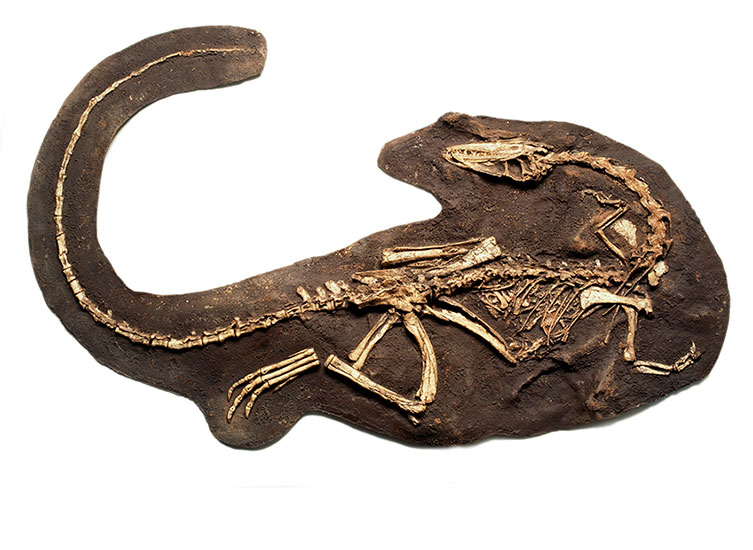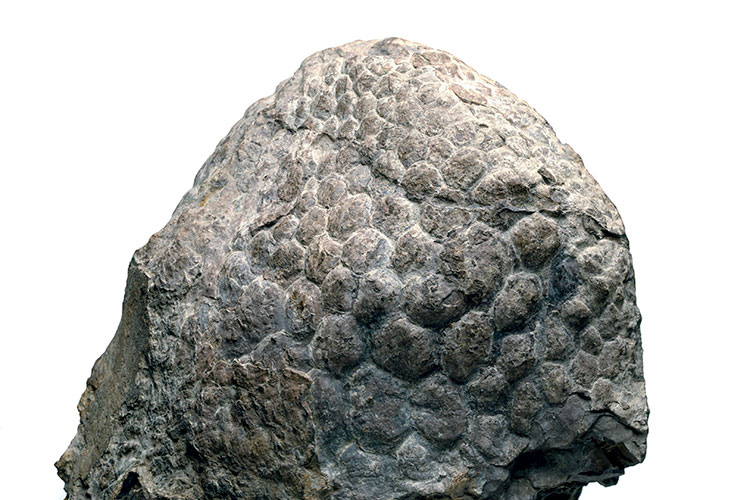Create a list of articles to read later. You will be able to access your list from any article in Discover.
You don't have any saved articles.

Scientists can't study real prehistoric dinosaurs at the zoo, but they can learn a lot about these intriguing animals from evidence such as their teeth, footprints and eggs. Image available under CC0, via Pixabay.
Scientists can't study living and breathing examples of prehistoric dinosaurs, so what's the best alternative?
Dinosaur researcher Prof Paul Barrett fills us in.
The premise of the Jurassic Park film franchise is an elegant one: that dinosaur DNA, preserved in the guts of ancient mosquitoes trapped in amber, could be used to clone these animals and bring them back to life using the latest genetic technology. It's an ingenious idea, but one that remains deeply within the realms of science fiction, at least for now.
So, given that we're unlikely to see dinosaurs roaming our zoos and safari parks anytime soon, how do scientists determine how these amazing animals fed, ran, bred and died?
Palaeontologists - the scientists that study extinct life - have a surprising array of tools for examining the fossilised remains of animals and plants to determine how they might have appeared and behaved when alive.

Nest containing eggs, probably those of the theropod Citipati, found in the Gobi Desert, Mongolia. These dinosaur eggs are around 80 to 85 million years old. Scientists can learn about a dinosaur's egg-laying and parenting strategy from the number of eggs and the way they are arranged.

Dinosaur footprints reveal the size of the animal and how it walked: on two legs or four. The stride length can also be used to calculate how fast the dinosaur was moving. These tracks in Dorset, UK, were made by an Iguanodon-like animal.

Fossilised poo, called a coprolite, sometimes contains evidence of an animal's past meal. These droppings found in India are believed to have been left by a dinosaur around 70 million years ago. The dark bits are pieces of plant, so the dinosaur was probably a herbivore.
In the case of dinosaurs we have their skeletons, but we also have other evidence that can give insight into their daily lives, including preserved gut contents, eggs, nests, footprints, skin impressions and even dinosaur poo. Comparisons with living animals are also key.
Detailed examination of skeletons provides information on the shapes of the bones and how they fit together.

Palaeontologists sometimes find the fossilised remains of a dinosaur preserved in the position it died, as with this Coelophysis fossil skeleton. They can see what bones were next to each other and how the joints worked. Using this information they can reconstruct the dinosaur and how it moved.

Reconstructed Triceratops skeleton found in the USA. If an excavation reveals dinosaur fossil bones that aren't arranged as they were when the animal was alive, palaeontologists use knowledge of anatomy and comparisons with other animals to piece together the skeleton.
If we can identify similar features in living animals, whose biology we can study in real time, we can infer similar functions for those same features in extinct animals.
Rough patches and flanges on bone can be used to reconstruct the positions of muscles, cartilage and ligaments.
Studying the scratches and wear patterns on teeth reveals vital information on diet and feeding.

Scientists can deduce a dinosaur's diet from the shape of its teeth. Analysis under a microscope may reveal wear marks that give further clues to what the dinosaur ate and how. The interlocking teeth in this Edmontosaurus jaw formed a grinding surface for eating tough vegetation.
This type of work has been carried out since dinosaurs were first discovered in the early eighteenth century, and continues to provide new results today. However, this classical approach has been expanded thanks to an array of modern technologies, pioneered in fields from medicine to engineering, which are now being applied to fossils on an almost routine basis.
Perhaps the most significant advance has been the application of computed tomographic (CT) scanning.
This technique uses rotating X-rays to build up a 3D model of both the internal and external anatomy of an object. It has diverse uses, ranging from diagnosing illness to checking car or airplane parts for flaws before they leave the factory floor.
CT scanning can be used to peer inside dinosaur bones and reveal features of the skeleton that were previously difficult to access, including the shape of the brain and the presence of air-filled sacs that ran through many dinosaur bones.

Museum dinosaur researchers used a CT scan of a Stegosaurus skull to produce a 3D digital model. They used biomechanical tests on the model to show how Stegosaurus chewed and found that it had a particularly powerful bite for a herbivore.
The CT scans produce perfect virtual models of the bones, which can then be subjected to testing in ways that would be impossible with a fragile or cumbersome fossil. By importing the virtual models into different computer programmes, dinosaur skeletons can be clothed in muscle, subjected to forces generated by walking, running and feeding. They can also be tested to destruction in ways that no worthy museum curator would permit on the original bones themselves.
By carefully cutting thin sections through dinosaur bones and putting them under the microscope, we can age dinosaurs and work out how fast they grew to adulthood. This is done by counting the growth lines in the bone walls which, much like tree rings, were laid down each year.
Dinosaurs grew really fast, with even the largest species such as Apatosaurus and Tyrannosaurus reaching full size in no more than 30 years - and like humans, dinosaurs had a teenage growth spurt.
Some dinosaur fossils are so spectacularly preserved they include evidence of soft tissues like skin, muscle and internal organs. These give vital clues on dinosaur biology and appearance.

Sauropod dinosaurs such as Haestasaurus had scaly skin similar to that of a large lizard. This is the first bit of dinosaur skin discovered anywhere in the world. It was unearthed in Bexhill.

Fossilised skin of Scolosaurus cutleri. It shows that this dinosaur had pebbly plate-like armour set into leathery skin.
For example, some spectacular fossils from China (such as Caudipteryx, Sinosauropteryx and Sinornithosaurus) show that many meat-eating dinosaurs were covered in thick coats of feathers, helping to cement the idea that birds are nothing more than small, meat-eating dinosaurs that gained feathers and learnt how to fly.
The recognition that birds are dinosaurs is an idea that has been proven beyond reasonable doubt in the last 20 years, and also gives us new clues on what extinct dinosaurs might have been like.

Sinosauropteryx was the first dinosaur found to have feathers, other than birds and their immediate relatives. It was covered with simple filament-like feathers, which you can see preserved along the back and tail of this fossil. Scientists have even established that this dinosaur's tail had a striped colour pattern. © Sam Ose and Olai Skjaervoy, licensed under CC BY 2.0, via Flickr
As living dinosaurs, birds can be used to test some of the ideas that palaeontologists have proposed based on bones alone. They also carry a direct genetic legacy of their dinosaurian ancestry, which means that bird genes are dinosaur genes, even though birds represent only one specialised branch of the dinosaur family tree.
Some scientists are currently attempting to switch on long-dormant genes in living birds that might have been responsible for producing the teeth, characteristic skull shapes and long tails of their dinosaur ancestors.

Early birds had teeth, as shown here in this palaeoart reconstruction of Patagopteryx, which lived around 80 million years ago. Scientists have worked out which genes were responsible for forming the teeth. They are still present in birds today, but are dormant. © FunkMonk (Michael BH), licensed under CC BY-SA 3.0, via Wikimedia Commons
These efforts are already producing impressive findings, such as genes that can transform bird beaks back into more dinosaur-like snouts and those that can stimulate hens to form teeth.
This work is undoubtedly interesting - and it has implications for human health. Some of the key genes are also important in regulating various strains of human cancer, so this pure science project on dinosaur genes is providing insights that could improve human health too.
Moreover, this type of genetic manipulation, based on the DNA of living dinosaurs, is probably the closest we will ever get in reality to a Jurassic Park scenario.